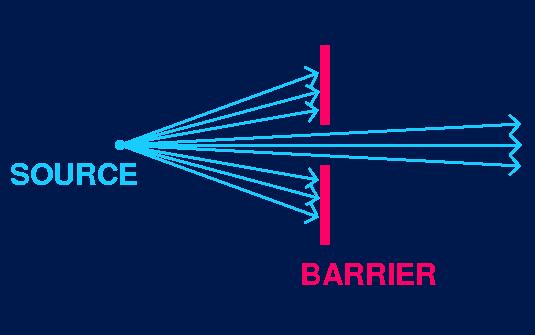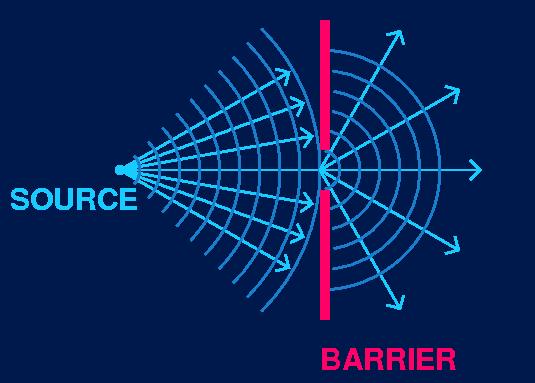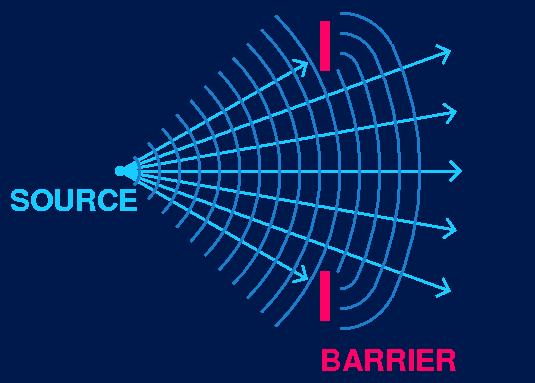Diffraction
Diffraction
DIFFRACTION:
The bending of waves around corners that occurs when a portion of a wavefront is cut off by a barrier or obstacle.

BEAM OF PARTICLES AND AN APERATURE:
When a beam of particles encounters a barrier, it either is stopped by the barrier, or passes through the aperature cleanly without any change in direction

WAVES AND A SMALL APERATURE:
When a wave encounters a barrier with a small aperature, relative to its wavelength, it bends/diffracts and spreads out in a circular wave.
Waves always bend around an aperature, however, the amount of diffraction depends on whether the aperature size is large or small compared to the wavelength. If the aperature is around the size of the wavelength, or smaller, the waves spread out on the other side of the obstacle as if originating from a point souce in the aperature.

WAVES AND A LARGE APERATURE:
If the aperature is much larger than the wavelength, there is not much diffraction, and only the edges of the wavefronts bend slightly. For the most part the wavfronts are not affected and continue to propagate in the direction of the rays, much like a beam of particles.
Because the wavelength of light is so small (400 to 700 nanometers for visible light), the diffraction of light around real world size obstacles and aperatures is very slight, explaining why for so long light was not thought of as having wave-like properties.
BACK


